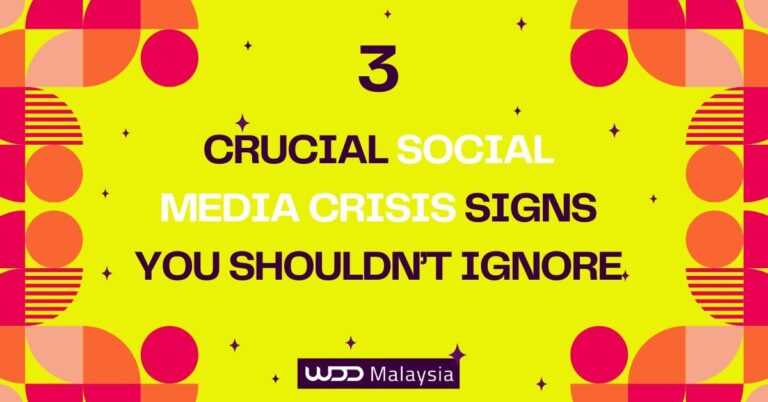Unless you plan to become the President of the United States, then you need at least 5,000 data points to understand about your voters before you can convey your message precisely — a set record benchmark from the Cambridge Analytica scandal.
Ever since, social media and data analytics companies have been scrutinised over data privacy, lack transparency and have been legally enforced to refine its rules of collecting data. To keep consumers safe from data manipulation, all data collected by big companies are fully protected under its country law and jurisdictions. For most cases, it is also GDPR compliance governed by the European Union.
In the case of any small businesses, web design is not just about making a website to look good, mobile-friendly or performing at top speed. There is a lot more you can do with your website data like understanding how your users are behaving and perceiving your contents.
For instance, if your website is focusing on kurma (dates) supplies, then the majority of visitors should skew toward Malay groups and if you are selling baby products, then the majority should be female mothers.
With data and analytics, it gives you more understanding on how you can pivot your contents, make informed changes and possibly convert your visitors to customers in the shortest time. Thus, increase sales. To do this is fairly simple, you’ll just need to integrate with analytic tracking software like Google Analytics into your new website to start aggregating data.
However, there are zillions of information you need to pick up from this Analytic tool, but here, we are just going to do some island hopping first before diving deep into these 4 primary data points;
1. Understanding Your Audience Basic Data
The audience’s basic data varies from every business type. Whether your business is branded or yet branded, it sure has multiple sets of customers who behave differently around your website. Given this fact, here are the three data we must understand first to set our ground correctly;
i) Age — It defines whether you are speaking the right tone and manner to your audience. Talking to academic students is totally different than talking to working/experienced adults. It also factors in the length of information you want to produce. For most young groups, graphical elements are much more persuasive. Text and words are more skewed towards middle age.
ii) Gender — In your data, you will also discover the “Unknown” gender besides Male/Female. But don’t laugh or ignore this data. For some businesses, Unknown users comprise the most active users on their website.
iii) Geo-Location — It is imperative to know where your main customers are coming from. Subsequently, this can also determine how well you can pivot your sales force. If your data shows more search and view are coming from Kuala Lumpur, and your sales force is in Selangor, you’ll know what to do next.
2. Understanding their Interest / Affinity
We would also like to understand if their Interest / Affinities have any relationship with your brand or products. For example, if your audience interest is Nike / Adidas brand and you are selling sports equipment, that could mean a 90% good match. The point you should look further at is whether these audiences are a sporty type or just brand-oriented. And therefore, you can decide whether to shuffle your product’s offerings with a sporty tone.
3. At what point does your audience leave your website?
All site visitors will eventually leave your website within a certain timeframe. And most importantly will they return? Understanding how much they do or what they have explored in your website will definitely improve on your Retargeting strategy.
An example of a real-life Apparel store, imagine a customer comes in, tries a shirt and leaves immediately. What does this tell you? — Nothing!. If this is done many times enough it could probably drive your store manager nuts and laundry expenses sky rocket.
On the contrary for a website (e-commerce) and base on the same scenario, we can at least discover 2 things;
a) they are 100% interested in the item but the price is shooing them offs, or
b) they felt that this item does not suit them at all.
Either way, with this type of website data, we can try to do a Retargeting strategy and attempt to convert this audience to a Buying Customer or become an Affiliate.
4. The Favorite Page
For any website that has at least 5 pages, it is important to know which pages of the website are a favourite to your audience. For example; if you are running a Pharma website and major visitors are browsing through your mask page, then the answer is clear — Sell More Masks. Although, it requires several techniques in place to realise this sales opportunity. Contact us for a quick consultation.
Conclusion note from Someone, WHO
Data is like a digital currency in the Internet World. If it’s harvested correctly based on data protection guidelines, it can be considered as a genuine direct response from real people, not robots.
Ignoring it will be a big mistake for any kind of organisation, businesses, blue or white house. Don’t be like Donna Trumb, who chose to ignore it resulting in the entire economy and people suffering in the pandemic.
On the other hand, acting on it (depending on which data point) can help businesses to thrive with the economy.
Learn and develop from your website data, and if you need someone to assist you please do not hesitate to give us a buzz.




